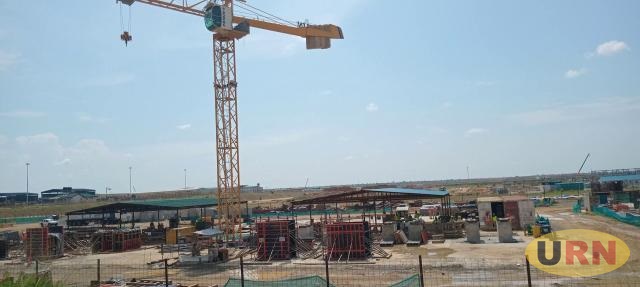
HOIMA, UGANDA | THE INDEPENDENT | The oil and gas sector over the weekend got a vote of confidence from Alpha MBM with the signing of an implementation agreement for a green refinery in the Albertine Graben. The Uganda Refinery project is estimated to cost around US$ 4 billion or more.
The Minister of Energy, Ruth Nankabirwa described the signing an Implementation Agreement as the third triplet to be born by the oil, gas and energy sector this year. It is was the second financial closure after the one secure for the East African Crude Oil Pipeline project (EACOP)
Alpha MBM is expected to design, construction, and operation of a 60,000-barrel-per-day refinery in Hoima
Previously, the Project Framework Agreement (PFA) with the Albertine Graben Energy Consortium (AGEC) which expired on 30th June 2023 provided that the project would be funded through a debt-to-equity ratio of about 70:30.
The Lead Investor was expected to raising the debt for the project. The arrangement according to the Permanent Secretary at the Ministry of Energy, Engineer Irene Batebe has changed. She told URN that it will entirely be funded through equity. It means the government is not going to the debts markets like it did for EACOP.
She hopes that Alpha MBM working with Uganda National Oil Company should quickly mobilize finances to kick start the construction. Uganda National Oil Company, through its subsidiary Uganda Refinery Holding Company is the co-investor in the refinery project.
Batebe revealed that UNOC is expected to enter a shareholder’s agreement with Alpha MBM for purpose of incorporating the refinery company which will be the vehicles for implementing the green refinery project.
“And those negotiations have advanced. And this month, we should conclude it because that is a simpler agreement. The main agreement was the implementation agreement” she explained.
The implementation agreement basically highlights the obligations of the developer, those of the government and the obligation of Uganda National Oil Company. It also highlight the rights of the Uganda National Oil Company, Alpha MBM and the government of Uganda.
The Refinery Project includes the development of a 60,000 barrels of oil per day (bopd) refinery located in Kabaale -Hoima District, a 211-kilometer multi-products pipeline from Kabaale to a distribution hub in Namwambula -Mpigi District, a refined product storage terminal in Namwabula – Mpigi, and a raw water pipeline from the Lake Albert to the refinery in Kabaale.
It had been expected that Crude oil from King Fisher field land the Tilenga field operated by CNOOC and TotalEnergies would directly sold to the refinery feedstock before the rest is pumped into the East African Crude Oil Pipeline to the international market.
Batebe said Uganda National Oil Company will be the sole supplier of crude oil to the refinery.
“We are running a tolling refinery project where UNOC will be the sole supplier of crude to the project. So the national oil company and the government have been negotiating a crude supply agreement with the upstream companies TotalEnergies and CNOOC,” Batebe revealed.
Equity financing a better deal ?
Dr. Paul Bagabo, who leads the design and implementation of Natural Resources Governance Initiative’s programs and strategies in Uganda told URN that financing the project through Equity is better deal for Uganda.
“I think equity financing is better. Because our biggest problem has been financing the project through borrowing. The Alpha MBM investors seems to be having a deeper pockets. They should quickly mobilize quick financing for the project,” said Bagabo.
Bagabo was one of the authors of a report titled “Uganda’s Oil Refinery: Gauging the Government’s Stake” Their modeling that was based on debt: equity ratio of 70:40 ratio then suggested that the refinery could be reasonably profitable.
They had warned that it was risky if the government took a large equity stake in the oil refinery and that borrowing was not a silver bullet.
Some analysts have previously told URN that the investor could have an advantage of availability of feed stock which will be tapped at the tolling point before the rest is exported through EACOP.
Others have said obtain crude at sources would reduce profitability for EACOP because 60,000 barrels of crude will remain I the country.
Refinery Benefits to the Economy
The government estimates that it will collect around $3.3 billion in total: an average $130 million a year assuming the refinery operates for about 25 years.
That would translate to about 5 percent of the revenue that the government expects to collect from the oil sector overall The government also expects 4,000-6,000 jobs will be created through the four years of building the refinery.
A Stanbic study had estimated that overall, the refinery could generate around 32,000 jobs during its lifetime:
A race against time
It is now clear that the refinery is far below schedule compared other work done to get oil out of the ground.
It is not feasible that it catch up with the EACOP, Central Processing Facility (CPF) and the developments at CNOOC and Tilenga fields. So it will not be place by first oil 2025.
Some engineering experts have told URN that the construction a refinery similar to what is planned for Uganda may take 18-36 months.
The processes include feasibility study and planning, engineering and design, construction and Installation, testing and commissioning and regulatory inspections and approvals.
Land acquisition for the refinery
Fortunately, the project cannot be delayed by the tedious land acquisition processes and wrangles. The refinery land is already in pace at Kyakaboga in Hoima district. All the Project Affected Persons ( 2,670 PAPs) were compensated.
****
URN
 The Independent Uganda: You get the Truth we Pay the Price
The Independent Uganda: You get the Truth we Pay the Price



